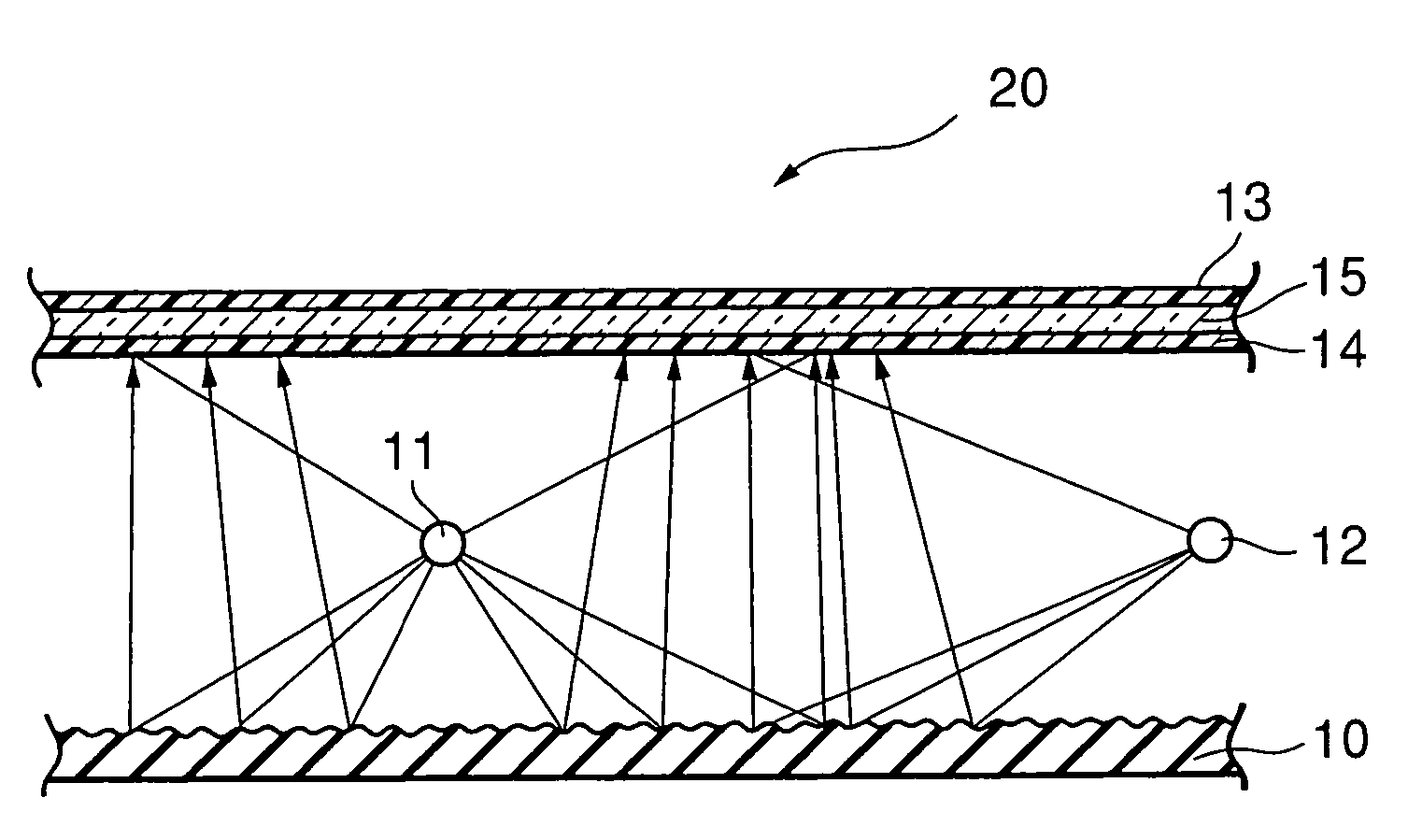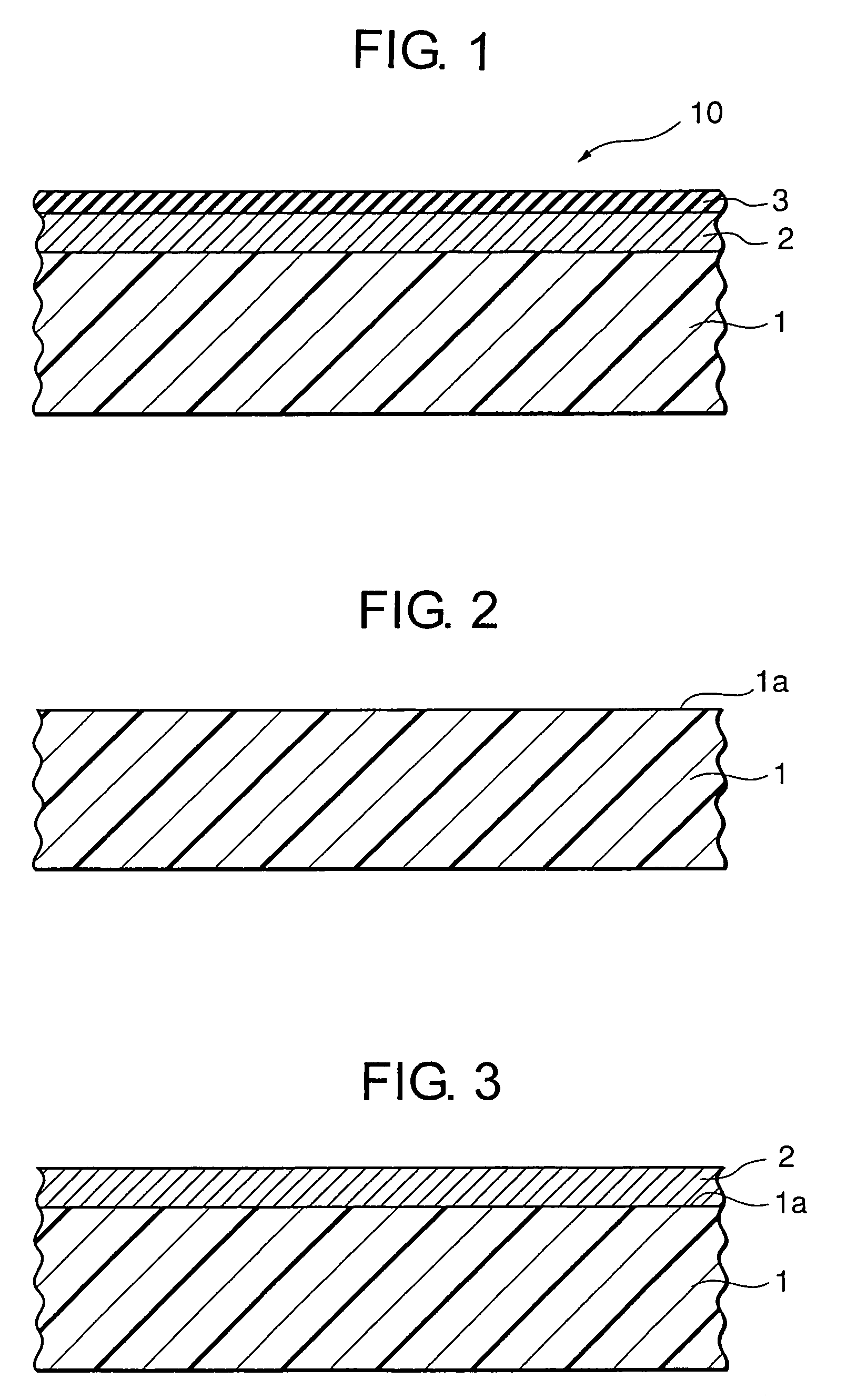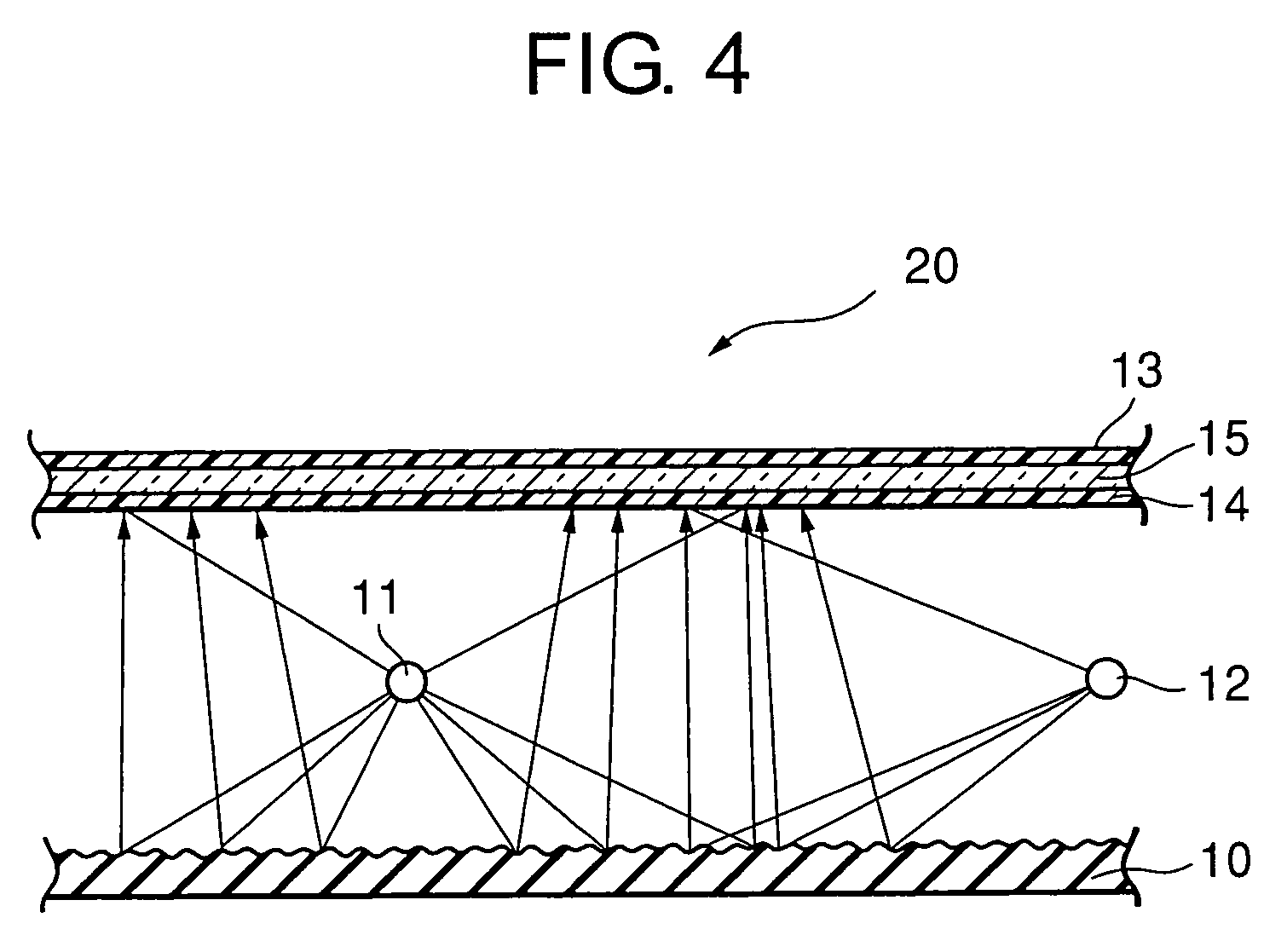Visible light-reflecting member
a technology of visible light and reflective member, which is applied in the direction of superimposed coating process, lighting and heating apparatus, instruments, etc., can solve the problems of low light utilization efficiency, increase in thickness and weight, increase in size of guide plate to be used, etc., and achieve the effect of improving corrosion resistan
- Summary
- Abstract
- Description
- Claims
- Application Information
AI Technical Summary
Benefits of technology
Problems solved by technology
Method used
Image
Examples
Embodiment Construction
[0053]In assiduously repeating researches on a relationship between aluminum plane orientation and visible light reflectance, the present inventors have carried out sputtering film formation that can control the plane orientation and is capable of uniform film formation even over the whole surface of a large-size substrate and examined the reflectance, and obtained knowledge that selective formation of a particular plane orientation is a very effective means for reliably improving the reflectance in the visible light range. In other words, the present inventors have discovered a technique of causing more (111) planes to remain in a thin film by performing the sputtering film formation under specific conditions, found out that the reflectance in that event is high, and conceived this invention.
[0054]At first, this invention will be described more specifically. FIG. 1 is a partial schematic sectional view showing one example of a visible light reflecting plate of this invention and FI...
PUM
| Property | Measurement | Unit |
|---|---|---|
| Ra | aaaaa | aaaaa |
| size | aaaaa | aaaaa |
| reflectance | aaaaa | aaaaa |
Abstract
Description
Claims
Application Information
 Login to View More
Login to View More - R&D Engineer
- R&D Manager
- IP Professional
- Industry Leading Data Capabilities
- Powerful AI technology
- Patent DNA Extraction
Browse by: Latest US Patents, China's latest patents, Technical Efficacy Thesaurus, Application Domain, Technology Topic, Popular Technical Reports.
© 2024 PatSnap. All rights reserved.Legal|Privacy policy|Modern Slavery Act Transparency Statement|Sitemap|About US| Contact US: help@patsnap.com










